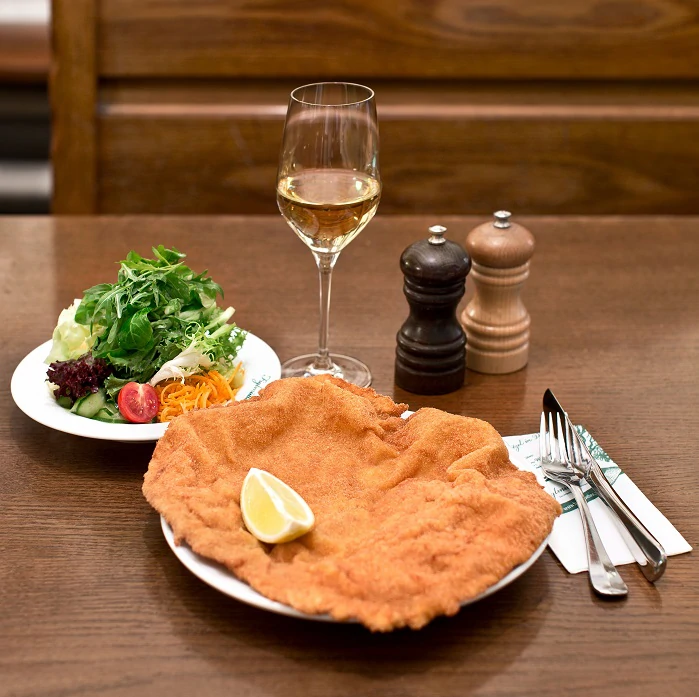Where is the Augarten located? What used to be here instead of the oldest baroque garden in Vienna? Who is the Augarten associated with and what can you visit there?
Vienna’s Augarten, the oldest baroque garden in Vienna, is located in the 2nd district of Vienna – in Leopoldstadt – close to the U2 Taborstraße underground line. The French-style avenues of maple trees, ash trees, lime trees and chestnut trees laid out by garden architect Jean Trehet are impressive. It is one of the Austrian Federal Gardens and is closed at dusk. Joggers like to use the approx. 3 km long park circuit of the approx. 52 ha park during the day.
What is there to see in the Augarten?
- The Augarten Palace has been home to the Vienna Boys’ Choir since The grammar school with boarding school is only for choirboys, the other institutions (kindergarten, private elementary school) are for all music-loving children.
- In the MuTh, the concert hall of the Boys’ Choir , you can listen to the most beautiful children’s choir in the world.The construction of the modern concert hall at Augartenspitz initially caused a stir due to its architecture, but it was opened in 2012.
- The historic Augarten Palace with its porcelain manufactory makes the hearts of porcelain lovers beat faster. The Garden Hall is home to the headquarters of the Augarten porcelain manufactory. Since the beginning, high-quality porcelain has been made by hand and has its
- Atelier Augarten (currently unused) The studio of the artist Gustinus Ambrosi was once located here. Francesca Habsburg-Lothringen set up the Thyssen Bornemisza Art Contemporary Foundation on the premises from 2012 to 2017.
- Filmarchiv Austria is located in the 1997
- Retirement home – Haus Augarten is a beautiful retirement home with a view of the park
- Children’s outdoor pool – always very popular with local residents with children in summer. Children’s playgrounds and sports fields round off the offer
- Lauder Chabad Campus – the 2nd district has a strong Jewish character, which is why you will find a synagogue, nursery, kindergarten, elementary school, middle school and a pedagogical academy here.
- Two flak towers (anti-aircraft guns) dominate the park and are a reminder of the dark days of Austrian history.
- The Bunkerei Augarten (which has nothing to do with a bunker) invites you to enjoy good food
The history of the park
The park has been a listed building since 2000. What used to be here? Let’s go back to the year 1614, when Emperor Matthias had a
40 years later, a successor – Ferdinand III – had a small garden initially laid out in the Dutch style and extended the hunting lodge. Leopold I (grandfather of Maria Theresa and also known by the nickname “
Leopold’s son – Emperor Joseph I – had the palace and garden restored by Jean Trehet in 1705-08 . In 1712, his brother, Charles VI, once again commissioned the extension of the garden as we see it today in terms of its size and splendor. Jean Trehet also created the gardens at Schönbrunn and Belvedere.
Open to the public since 1775
When the Prater was opened to the public in 1766, it was in keeping with the Enlightenment to open the Augarten to the public. Joseph II thus made the Augarten accessible to the public on May 1, 1775 . The striking entrance portal on Obere Augartenstraße bears witness to this and leads directly to Augarten Palace, where the Augarten Porcelain Manufactory is located.
Towards the end of the 18th century , the famous morning concerts took place in the Garden Hall of Augarten Palace under the direction of none other than Wolfgang Amadeus Mozart .
The nearby Danube flooded the Augarten several times in the 19th century. Two memorial plaques, one at the main entrance and one at the entrance in Castellezgasse, commemorate this.
The flak towers in the Augarten
The Second World War brought changes to the Augarten. Prior to this,
Nowadays, people go to the Augarten to walk, run (cycling is prohibited) and practise yoga. Cinema under the stars is also popular, as is the successor Kino wie nie am Augartenspitz.
Time Travel tip: A walk through the Augarten is worthwhile because of the beautiful baroque grounds, the history, the diversity and can be combined with a culinary visit to the Bunkerei Augarten or the Sperling restaurant in Augarten Palace. A combination with the Carmelite Market and the Jewish Quarter is also a good idea.
Image source: https://commons.wikimedia.org/wiki/File:Wien_02_Augarten_gb.jpg



